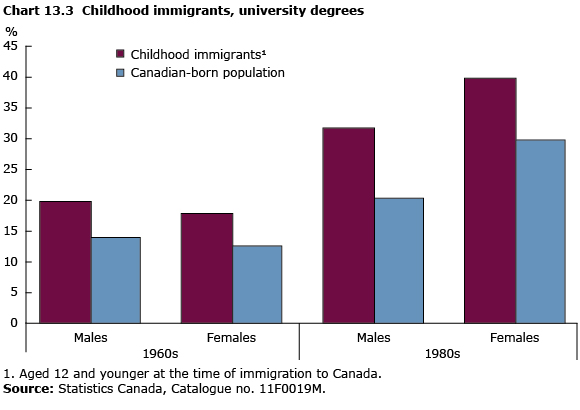Gaps between immigrants and their Canadian-born counterparts
Archived Content
Information identified as archived is provided for reference, research or recordkeeping purposes. It is not subject to the Government of Canada Web Standards and has not been altered or updated since it was archived. Please "contact us" to request a format other than those available.
Related information
Childhood immigrants (aged 12 and younger) who arrived in Canada from the 1960s to the 1980s were more likely to complete a university degree than their Canadian-born counterparts.
The education gap is particularly evident by gender among those who arrived in the 1980s. About 32% of males and 40% of females had a university degree by the time they were aged 25 to 34, compared with 20% and 30%, respectively, of their Canadian-born counterparts.
Male childhood immigrants of the 1980s were more likely to complete university, but their average earnings were 4.8% lower than those of their Canadian-born counterparts. Female childhood immigrants of the 1980s have fared better: their average earnings were 9.5% higher than their Canadian-born counterparts, and their average earnings have risen more rapidly with each generation.
- Date modified:

